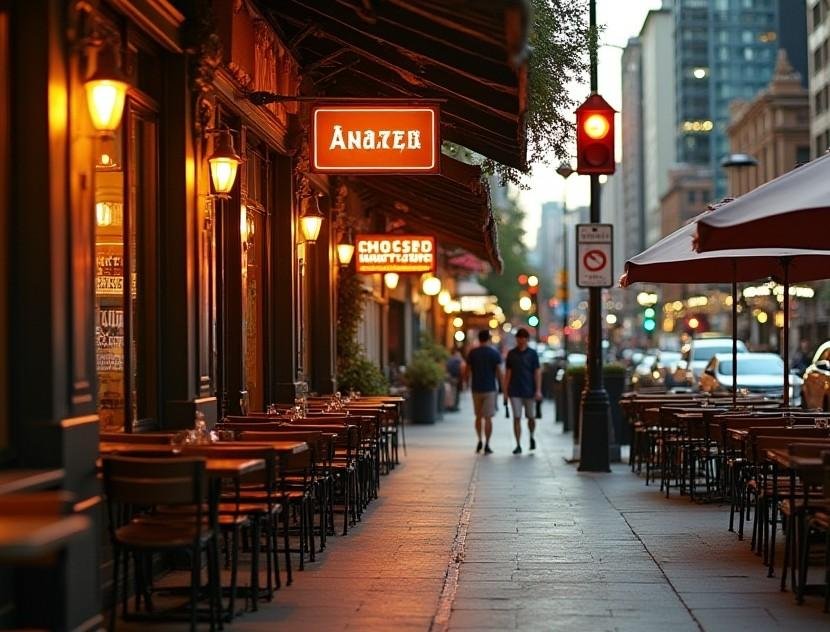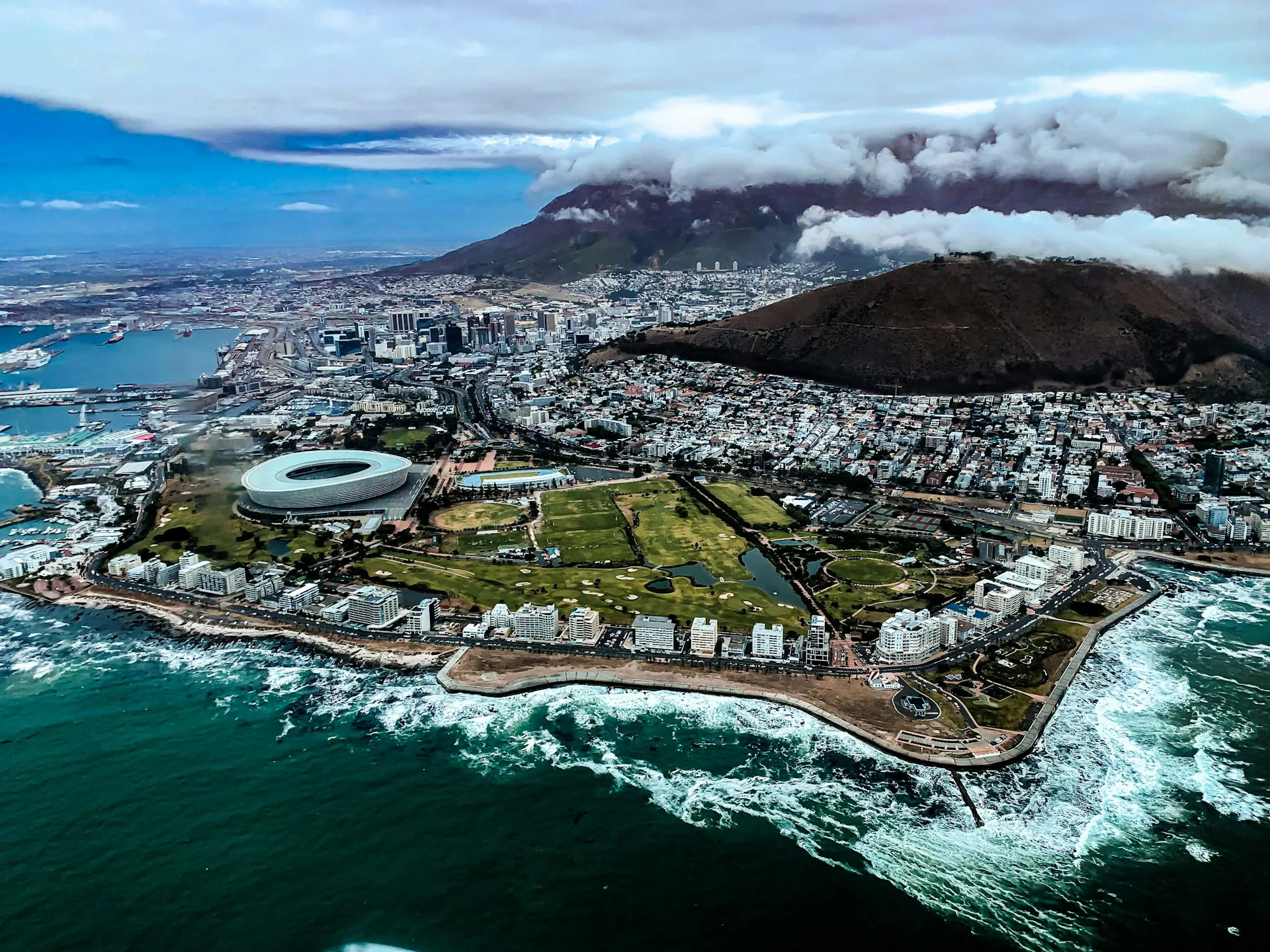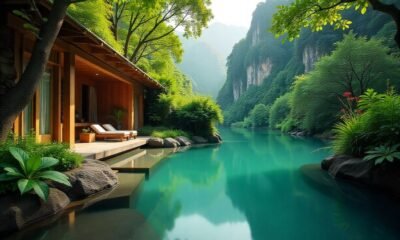Destinations & Things To Do
All You Should Know About Sydney, Melbourne, Brisbane and Australia’s Top Destinations Hospitality Crisis as Tourists Confront Dining Shortages and Rising Prices

Monday, July 28, 2025
Australia’s tourism industry has long been synonymous with vibrant food scenes and lively restaurants, offering a world-class experience for travelers. However, a hidden crisis is quietly unfolding within the hospitality sector, one that could have far-reaching consequences for those planning to visit. The Restaurant and Catering Association (R&CA) has sounded the alarm, warning of a staffing shortage that threatens to derail Australia’s tourism economy. With businesses facing mounting challenges, this article explores the crisis and what it means for travelers in 2025.
A Hospitality Crisis Undetected by Tourists
For many international visitors, Australia’s culinary landscape is one of the top draws. However, recent reports have uncovered a stark reality: over the past few years, the hospitality sector has been in rapid decline. According to the R&CA, two-thirds of businesses that were operational in 2020 have now shut their doors. The situation has worsened dramatically, with the number of venues halving in just five years. This decline is being referred to as a “structural collapse” rather than a mere downturn.
From a traveler’s perspective, this crisis could mean fewer dining options, with some of the country’s most beloved restaurants and cafés shuttering. With boarded-up windows and “closed for business” signs now appearing in major tourist destinations, the once-thriving food culture that Australia is famous for may soon be a thing of the past.
Tourism Impact: The Illusion of Growth
While tourists might notice increasing prices at popular restaurants and cafés, the spike in costs isn’t necessarily a sign of a flourishing industry. In fact, it’s the result of a fragile and misleading trend: “profitless growth.” According to John Hart, Chair of Policy and Advocacy for the FoodService Association Australia (FSAA), the apparent rise in revenue is mostly driven by price hikes rather than an increase in foot traffic. For tourists, this means that while dining may still be available in some areas, the quality and affordability may begin to diminish.
This shift is particularly concerning for those traveling on a budget or seeking authentic local experiences. Higher menu prices could reduce the overall value of their Australian trip, and the uncertainty around the stability of local businesses raises questions about the future of dining experiences in key destinations.
Australia’s Culinary Future: A Call to Action for Tourists
The ongoing staffing crisis in Australia’s hospitality industry has prompted a united push from foodservice operators and supply partners for urgent reforms. This collective advocacy is gaining momentum, with industry leaders like John Hart calling for immediate government intervention. His message is clear: without action, Australia’s reputation as a global culinary hotspot could be at risk, affecting not only local employment but also the overall experience for tourists.
For those planning to visit iconic destinations like Sydney, Melbourne, and Brisbane, the potential loss of beloved dining establishments could dampen the travel experience. The focus now is on economic survival and job preservation, as communities across Australia rally to protect the future of the hospitality sector.
What Does This Mean for Travelers?
If you’re a foodie traveler or planning your next culinary adventure in Australia, the crisis in the hospitality sector should be on your radar. For now, it’s crucial to stay informed about where the best food spots are in your travel destinations. Here’s what you can expect:
- Limited Dining Options: In some cities, you may encounter fewer choices as restaurants and cafés face closures.
- Price Increases: As businesses struggle to stay afloat, expect menu prices to rise across popular tourist hotspots.
- Cultural Shift: The vibrant, multicultural food culture that defines Australia is at risk. Travelers may notice fewer opportunities to experience diverse and authentic local cuisine.
The Road Ahead: Can Australia’s Hospitality Industry Recover?
With over 57,000 businesses represented by the R&CA, the organization is one of the largest advocates for Australia’s hospitality sector. Despite the current challenges, the association continues to push for practical, industry-led solutions. Key areas of focus include job preservation, economic recovery, and long-term sustainability.
The future of Australia’s hospitality industry rests on collaborative efforts between the government and private sectors. For travelers, this could mean that a change in policies or financial aid for local businesses might eventually restore Australia’s iconic food scene. Until then, travelers may need to adapt their expectations as they experience Australia’s changing culinary landscape.
Conclusion: A Culinary Crisis That Can’t Be Ignored
For anyone planning to visit Australia in the near future, the hospitality staffing crisis is more than just a headline—it’s a critical issue that could reshape your travel experience. While Australia’s natural beauty and cultural offerings remain as compelling as ever, tourists should be prepared for potential disruptions to the food scene they’ve come to love. As the industry grapples with these challenges, tourists can only hope that urgent reforms will soon restore balance and keep Australia’s restaurant culture alive for future generations.
Destinations & Things To Do
6 Weird “Real Life” Details Only Thru-Hikers Notice

Thru-hiking gives you a fresh perspective on life. It gets you out of your routine and forces you to look at things a little differently. Many hikers describe the trail changing their views on consumerism, work-life balance, spirituality, and other Big Things.
For me, thru-hiking did shift my perspective in several fundamental ways — but it also made me more attuned to a myriad of tiny, trivial details of “normal” life that I had never noticed before. Here are a few examples.
1. Perfume Smells
Nothing like spending 95% of your time breathing in a heady mixture of pristine mountain air and suffocating body odor to make the smell of perfumed beauty products seem like a frontal assault on your nostrils.
Thru-hikers often remark in hushed tones on the many overwhelming aromas emitted by passing day hikers — sunscreens, soaps, dryer sheets, etc. — which seem to linger in the air for several minutes after the source has trekked past.
Backpackers tend to avoid heavily perfumed products as much as possible because they might attract bears. In any case, if you’re going 3-7 days at a time between showers, there’s not much point in using fragrances to try to improve your personal aroma.
As a result, whenever we do encounter “town smells,” the result is sensory overload. Even walking down the cleaning-supply aisle at the grocery store during resupply becomes an olfactory nightmare.
Don’t get me wrong. No one’s arguing that thru-hiker smells are in any way superior to, say, Axe Body Spray. It’s just that perfumed products hit different after you’ve spent a decent amount of time away from that sort of thing.
2. Town Water
Hey, I’m all for water treatment. Water treatment improves health outcomes and is the reason I can drink water straight from my tap without having to filter it first.
But I have to admit, after drinking nothing but clean spring water straight from the source for even just a few days, the taste of chlorine in the tap water on town days can be overwhelming, almost like slurping directly from a swimming pool.
Some municipalities chlorinate their water more heavily than others, and other factors like water hardness can also impact taste. But when I’m spending most of my time frontcountry, the flavor is rarely noticeable.
Not so when I’m backpacking. I sometimes struggle to stay hydrated on town days simply because the taste is so unpleasant compared to the water I filter from stream crossings while hiking.
Side note: My AT privilege is probably showing here. Any desert thru-hiker who reads this after having filtered water from a fuzzy green cow tank will probably be rolling their eyes right about now.
3. The Existence of Power Outlets
When thru-hiking, one must take every possible opportunity to charge. My eyes are already scanning the bottom third of the wall as I walk up to the grocery store, searching for a vacant outlet half-concealed behind the vending machines.
Eating in a restaurant? If there are enough tables available that it’s not obnoxious to ask, I always request a table with an outlet nearby.
I carry a battery bank, but if I have a chance to top up my electronics from the grid, I’ll always take it. Better to err on the side of caution. Even to this day, I can’t walk into a Food Lion without mentally cataloging all the sockets near the entrance of the store.
4. Every Vaguely White, Vaguely Rectangular Thing (AT Hikers Know What I Mean)
These kind of scene will make you an expert in spotting white rectangles everywhere. Photo: Peg Leg
Do you have any idea how many white rectangles the average person encounters in a day? No? Go hike the AT and then take a walk through your hometown. Suddenly you’ll find yourself noticing random white signs, paint swatches, and suspiciously boxy lichen patches all over the place.
The AT will develop your backcountry abilities, mental toughness, and physical fitness. But there is no other skill that the trail trains quite like the skill of spotting white blazes.
Spend a few weeks navigating through a snowy forest on a trail marked almost exclusively with white paint and then try not to notice white rectangles everywhere you go for the next eight months.
After 2,200 miles on the AT, your brain will be in pattern recognition overdrive, and everything vaguely white and vaguely orthogonal will look like a blaze to you.
5. “That Looks Like It Would Be a Good Campsite”
For someone who allegedly loves hiking so much, I pass an awful lot of miles anticipating how great it will feel when I can finally make camp, and my mind occupies itself throughout the day by cataloging all the flat, vegetation-free spots I could potentially pitch a tent on (even if I know I’ll still be hiking for hours).
Much like with the white blaze thing above, once you’ve spent a certain amount of time scanning the surrounding terrain with desperate acuity in search of a flat patch of earth on which to camp, your brain’s pattern recognition superpowers take over and suddenly every flat surface stands out to you as though it had a spotlight trained on it.
I often notice amazing “campsites” while out on day hikes, in city parks, and occasionally in friends’ backyards.
Since we’re on the subject, consider this your friendly reminder to always sleep on durable surfaces and in established campsites, y’all.
6. Trail Couches
Comfortable seating is not a feature most hiking trails are known for. As a result, backpackers become freakishly attuned to the various kind-of smooth rocks and “pretty dry” logs that can serve as makeshift seating arrangements alongside the trail.
My friend Sally Forth used to call them trail couches — and every once in a great while, you’ll find a big rock that’s so comfy, so perfectly ergonomic that it should be illegal. Once you’ve experienced your first really primo rock-sitting experience, there’s no going back, and you’ll be searching everywhere for that next special trail couch.
Thru-hiking changes your perspective in many ways, and I don’t mean to neglect the bigger stuff. Of course, spending an extended period of time in the mountains on a thru-hike will probably also make you more attuned to deeper things like your own thoughts and feelings, the rhythms of the natural world, and the special synchronicity we often describe as “trail magic.”
What are some details you never noticed before thru-hiking but now can’t unsee?
Featured image: Graphic design by Zack Goldmann.
This website contains affiliate links, which means The Trek may receive a percentage of any product or service you purchase using the links in the articles or advertisements. The buyer pays the same price as they would otherwise, and your purchase helps to support The Trek’s ongoing goal to serve you quality backpacking advice and information. Thanks for your support!
To learn more, please visit the About This Site page.
Destinations & Things To Do
South Africa, Botswana among world’s top travel destinations in 2025

South Africa has secured the impressive title of the fourth-best country globally for travel in the 2025 Telegraph Travel Awards, standing as the highest-ranked African nation on the list.
Aerial view of Cape Town/Sharaan Muruvan/Unsplash
This accolade reinforces South Africa’s status as a leading global tourism destination, maintaining its place in the top 10 for over a decade.
Voted for by tens of thousands of Telegraph readers, the annual awards celebrate the world’s most cherished travel spots. South Africa’s appeal lies in its diverse offerings—from the cosmopolitan allure of Cape Town and the wildlife-rich Kruger National Park to the stunning Garden Route.
Cape Town, notably, earned praise beyond the national spotlight, ranking highly in the Telegraph’s city-specific polls. Additionally, the city was named one of the world’s top 20 nightlife destinations in The Times’ 2025 global nightlife rankings, recognised for its vibrant after-dark scene.
From gritty warehouse raves to glamorous rooftop lounges, Cape Town pulses with Afro-house and amapiano beats that keep locals and visitors dancing until dawn.
Botswana also features prominently, placing 10th on the Telegraph’s list. Though its rank remained steady, Botswana continues to captivate travellers with its pristine wilderness and commitment to conservation-led tourism, securing its reputation as one of Africa’s most timeless travel gems.
Top 10 Countries in the 2025 Telegraph Travel Awards:
- New Zealand
- Japan
- India
- South Africa
- Greece
- Australia
- Peru
- The Maldives
- Costa Rica
- Botswana
Follow us on social media for more travel news, inspiration, and guides. You can also tag us to be featured.
TikTok | Instagram | Facebook | Twitter
ALSO READ: Kalahari in winter: Where chill air meets golden dunes
Destinations & Things To Do
Day 82: Town Days: Zero Miles and 6000 Calories

- Mountain Home B & B (off 972.7) to Front Royal Super 8 (off 972.7)
- 0 feet ascent, 0 feet descent
A lot of hiker hostels include or offer breakfast as an option. In general, there are two camps. Camp 1 is a lumberjack model. Breakfast is hearty with tons of carbs, fat, and sugar. Camp 2 is a fresh model. That breakfast focuses on fresh foods that are hard to get on trail.
Camp 1 breakfasts typically include towers of pancakes drowning in real butter and maple syrup. A Camp 2 hallmark is fresh fruit. Eggs are often served at both. Some breakfasts include both camps and are typically legendary: think Quarterway Inn or Woods Hole, and as we clearned today, Mountain Home B & B.
What Fruit Do You Not Eat?
Last night, well were instructed to select our entree for breakfast. I chose eggs with vegetables and cheese. The Historian selected an exotic pancake and egg entree.
We were also asked the seemingly odd question, “What fruits do you not eat?” The rhetoric was a little strange, so it stuck in my mind. Both of us said there really were no fruits we didn’t eat.
When we arrived for breakfast, prior to our entree arriving, we were presented with tea, coffee, juice and an astonishing fresh fruit plate. I was so excited, I forgot to snap a photo to share with you until I had eaten well over half of the offering. Imagine twice as much as you see in the photo!
After the fruit, our entrees arrived. They were delicious and piping hot. In addition to my fruit and eggs, I was treated to high quality, plain Greek yogurt (in top right of photo).
Packing Up
Our hosts had received a resupply package for our last Virginia segment. I was too hot and tired to deal with it last night so this morning we took it on.
Our process usually includes The Historian sorting food and me inventorying and placing it into our IAGB approved bear bags. We have gotten pretty fast at the job so it was not too tiresome.
Hiker Stink and Dryer Sheets
In addition to our food resupply, we had beautifully washed clothes. They had gotten unscented soap just for us so our clothes didn’t smell of hiker stink or grocery store perfume.
As it turned out, the laundry soap that the hostel used was not chemically manufactured scents, but fairly light, natural ones so we would have been OK without the special unscented soap but it was very kind.
In the Rockies, where we live, we jokingly call freshly washed day hikers “dryer sheets.” It is a little sarcastic, but is not meant unkindly.
When we are hiking, we often smell laundry soap scents well ahead of hearing or seeing other hikers. Occasionally, someone will pass us drowned in perfume but those are usually people where one member of the couple is reluctantly following the other during their “outdoor adventure vacation.”
Mostly, we smell the laundry scents they advertise on television. You know the kind, the actor presses their nose into a pile of laundry and the voice over says, “Smells fresh up to 6 weeks after washing.”
What people who don’t live around grizzly bears rarely consider is that the soap elixirs are usually food based. Here comes a hiker marinated in fresh lemon lime with a hint of peach. We imagine the bears nodding wisely at each other trying to decide which flavor hiker they most desire.
Transferring to Front Royal Super 8
The hostel was going to be closed for a family event so we organized to transfer to the Super 8 downtown. After packing our food and fresh, unscented clothes into our packs, we got a ride to town from the hostel owners.
The Library of Congress
Since it was still early, our room was not yet ready. We had a delightful conversation with the front desk clerk about the history of the Library of Congress. It turns out she was a history buff with loads of knowledge. She and The Historian kept the threads of the conversation going for two days.
After about 10 minutes of listening to these two avid history people go on about its establishment and the impact of the War of 1812, I excused myself to go work on the blog.
What I heard was that Congress wanted a resource library they could consult as they wrote laws. The library was established in the year 1800 with a $5000 approtiation. During the war of 1812, the British attacked Washington and the Library was burned when they burned the Capital.
To rebuild the collection, the Library purchased Thomas Jefferson’s personal library of 6487 books for $23,950 in 1815.
After selling his collection to Congress for the good of the cause, Jefferson discovered he could not live without books and so he built a third collection (his original library burned). This library is housed in Monticello and still offers research opportunities to scholars.
Into Our Room and Out for Food
We got into our room around 1 and dumped our packs. Hunger was floating around. We decided to walk to the grocery store and procure food to top off our resupply and for town.
On the way to the store, we spotted rhe Chinese resturant we had desired to order from the night before, when it was closed. We made an on the fly decision to eat then get more food at the grocery store. Perfect hiker hunger logic.
The buffet appeared a little spare when we first assessed it. What we didn’t understand was that the owners placed out small amounts of freshly prepared food every few minutes rather than fill a buffet and let it sit.
My it was good! I worked for 5 weeks in China in 1992. This was the closest to real Chinese food I have eaten in the USA. Some of the dishes were Americanized, but a few were more like I remember the food in China.
Just like this morning, I didn’t get a good photo since I was too busy eating.
Grocery Shopping
Stuffed to the gills, we headed to the grocery store. I was glad to have a cart to hang on to so I could keep my balance with my stuffed belly proceeding me.
The Historian agonized over which fresh fruit bowl he wanted. Melons or berries? With sorrow, he finally put a package of mixed cut melon in the cart. As we went across the produce section, we spotted a mixed melon bowl with berries in it. Hallelujah!
We thoughtfully selected salad to go with our fruit. To that we added freshly baked sourdough and some blue cheese. I also got a quart of plain yogurt. We were proud of our thoughtful purchases. Maybe being stuffed when we arrive at the store kept us on track.
Just Chilling
By the time we got back to the hotel, we had put in an active 10 hour day. Town chores are notoriously harder than the average hiking day. For card carrying introverts like us, all the visiting with others at hostels are enormous fun but also exhausting.
In our lonely, quiet, private hotel room, we closed the door and put our feet up and rested. Then we ate some more. Breakfast is a long time off.
This website contains affiliate links, which means The Trek may receive a percentage of any product or service you purchase using the links in the articles or advertisements. The buyer pays the same price as they would otherwise, and your purchase helps to support The Trek’s ongoing goal to serve you quality backpacking advice and information. Thanks for your support!
To learn more, please visit the About This Site page.
-

 Brand Stories1 week ago
Brand Stories1 week agoBloom Hotels: A Modern Vision of Hospitality Redefining Travel
-

 Brand Stories2 days ago
Brand Stories2 days agoCheQin.ai sets a new standard for hotel booking with its AI capabilities: empowering travellers to bargain, choose the best, and book with clarity.
-

 Destinations & Things To Do1 week ago
Destinations & Things To Do1 week agoUntouched Destinations: Stunning Hidden Gems You Must Visit
-

 AI in Travel1 week ago
AI in Travel1 week agoAI Travel Revolution: Must-Have Guide to the Best Experience
-

 Brand Stories3 weeks ago
Brand Stories3 weeks agoVoice AI Startup ElevenLabs Plans to Add Hubs Around the World
-

 Brand Stories2 weeks ago
Brand Stories2 weeks agoHow Elon Musk’s rogue Grok chatbot became a cautionary AI tale
-

 Destinations & Things To Do2 days ago
Destinations & Things To Do2 days agoThis Hidden Beach in India Glows at Night-But Only in One Secret Season
-

 Asia Travel Pulse3 weeks ago
Asia Travel Pulse3 weeks agoLooking For Adventure In Asia? Here Are 7 Epic Destinations You Need To Experience At Least Once – Zee News
-

 AI in Travel3 weeks ago
AI in Travel3 weeks ago‘Will AI take my job?’ A trip to a Beijing fortune-telling bar to see what lies ahead | China
-

 Brand Stories3 weeks ago
Brand Stories3 weeks agoChatGPT — the last of the great romantics













You must be logged in to post a comment Login